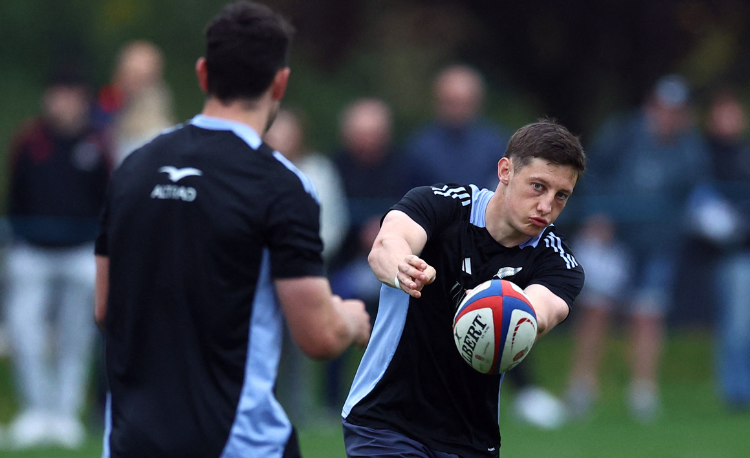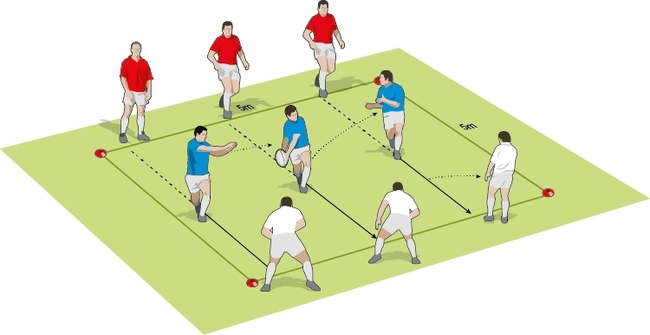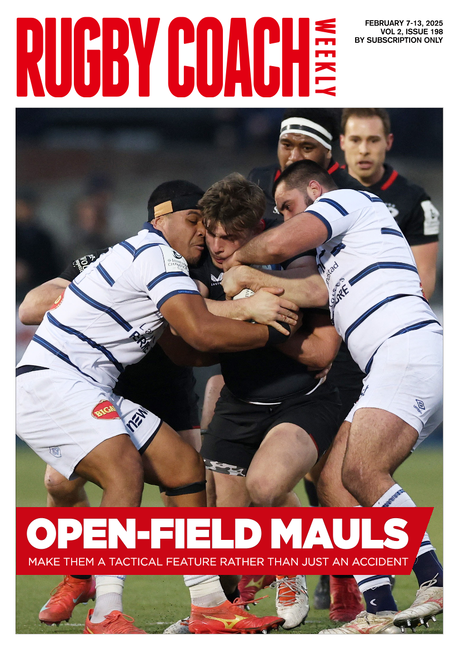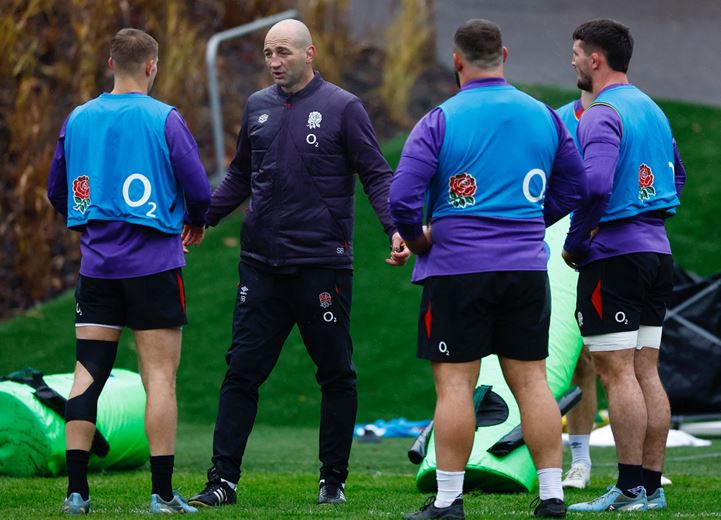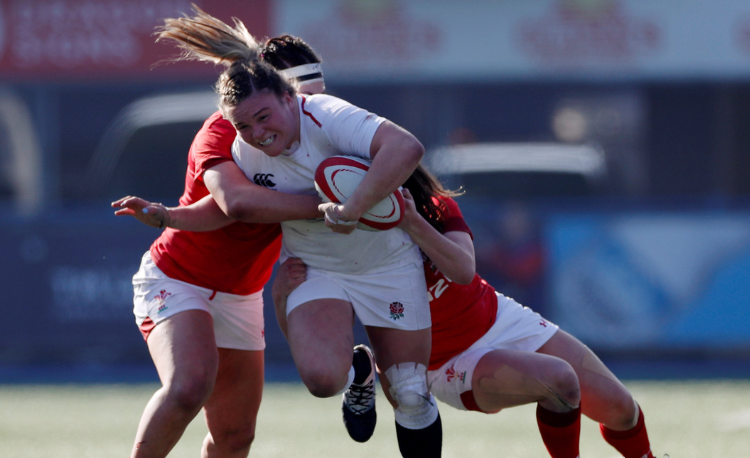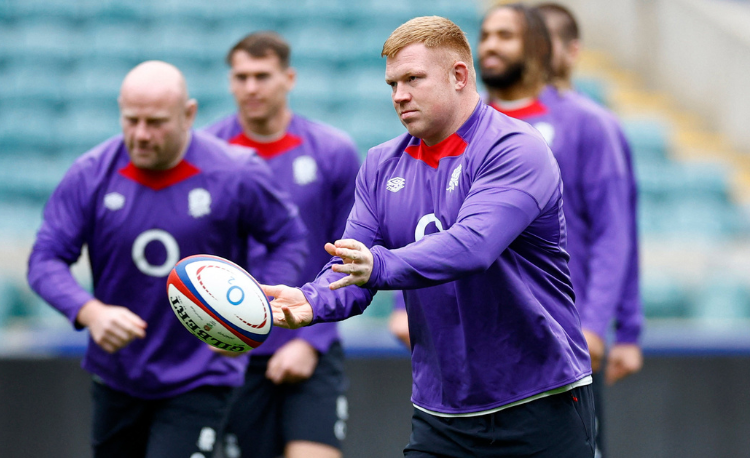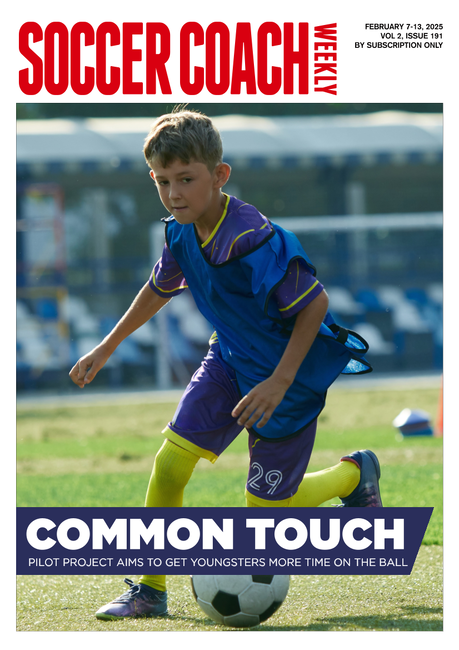Fast passing is better passing
Editor Dan Cottrell adds further context to two activities.
Here’s a well-worn demonstration, though no less effective because of that.
Grab hold of a rugby ball. Stand a player about 7m away from you, and put two players next to you.
When you say "Go!", these two players race to the player standing 7m away from you. You make the other players ’bet’ on who will win.
Now, say: “I’m going to replace one of the players with something much faster”. Then, get one of the fastest players in the squad to stand next to you.
Show everyone the ball. They know what’s going to happen, but demonstrate it anyway. When you shout "Go!", the fastest player sprints off – but soon gives up, as the ball flies past them when you pass it to the standing player.
As everyone choruses, “The ball will always beat the player”, you can set up races to show whether this is possible.
Set up a line of four players, 5m apart, with a ball at one end. A sprinter starts opposite the ball carrier.
When you shout "Go!", the ball has to beat the sprinter to the end of the line. Every player in that line must touch the ball.
It won’t be a foregone conclusion who wins. But the players will know that the ball should, if the handling is effective enough.
This sort of competition will certainly make the players want to improve their skills. You can experiment with different lengths of line. Shorter lines will favour the sprinter.
This sort of introduction and passing game is a great forerunner to this session. It works on the premise that quicker passes beat defenders.
The other aspect is that longer passes are often easier to defend, especially if looped, because defenders can cover across quickly.
Some of the speed of passing in the best televised rugby shows that, the faster the pass, the harder it is to defend.
Not all of your players can pass like Marcus Smith or Finn Russell, but encourage them to let the ball beat the player as much as possible.
Key techniques to look for
The catch: We want players to catch the ball off the body. That helps them in lots of ways.
It makes them put their hands out, which helps soften the blow of a fast pass. It also keeps the arms and elbows off the body, meaning it’s quicker to adjust the ball to pass it on. Look for fingertip control as the ball arrives.
The pass: Though there are a number of technical aspects to a good, quick pass, you should only concentrate on one for your session.
It doesn’t have to be the most important technique. Each session, look at a different one for players to think about.
Not really homework
Here, we’ve come up with some ideas for players to practise their handling at home.
We’ve called it ’homework’, but I’m never sure that’s a good idea. It’s something most kids will do everything in their power to avoid.
I’ve sat in a room with some of the best and sharpest minds in rugby and tried to come up with a different term. In the end, ’homework’ always comes back to the top of the list. It’s because, in the end, homework should be beneficial.
Training on your own is perfectly possible, and that includes practising catching a rugby ball.
A good catch enables us to do many things quicker and more efficiently – for example, take the ball into contact, catch and pass in one go, or look ahead for the best decision.
In recent years, I’ve asked all my players to bring their own ball to training.
For some, that means buying one for the first time in their lives. And the process of bringing it to train often leads to more ball work.
They will be flipping it around at home, when waiting to leave. When they are going to and from the car, they will be carrying it in one hand with their kit bag in the other.
These are small things, I know, but anything to put their hands on the ball helps.
I’ve also recently seen a playground game your players can adapt for rugby.
Set up a 3m wide circle of cones. Put four players around the circle. One player steps towards the circle with a ball and bangs it (spikes it) into the ground.
If the ball bounces out of the circle and is caught, the catcher receives two points. If it isn’t caught, the spiker has another go, plus receives a point. If it doesn’t leave the circle, and no-one catches it, no-one scores, and the spiker has another go.
Related Files
Newsletter Sign Up
Coaches Testimonials

Gerald Kearney, Downtown Las Vegas Soccer Club

Paul Butler, Florida, USA

Rick Shields, Springboro, USA

Tony Green, Pierrefonds Titans, Quebec, Canada
Subscribe Today
Be a more effective, more successful rugby coach
In a recent survey 89% of subscribers said Rugby Coach Weekly makes them more confident, 91% said Rugby Coach Weekly makes them a more effective coach and 93% said Rugby Coach Weekly makes them more inspired.
Get Weekly Inspiration
All the latest techniques and approaches
Rugby Coach Weekly offers proven and easy to use rugby drills, coaching sessions, practice plans, small-sided games, warm-ups, training tips and advice.
We've been at the cutting edge of rugby coaching since we launched in 2005, creating resources for the grassroots youth coach, following best practice from around the world and insights from the professional game.
